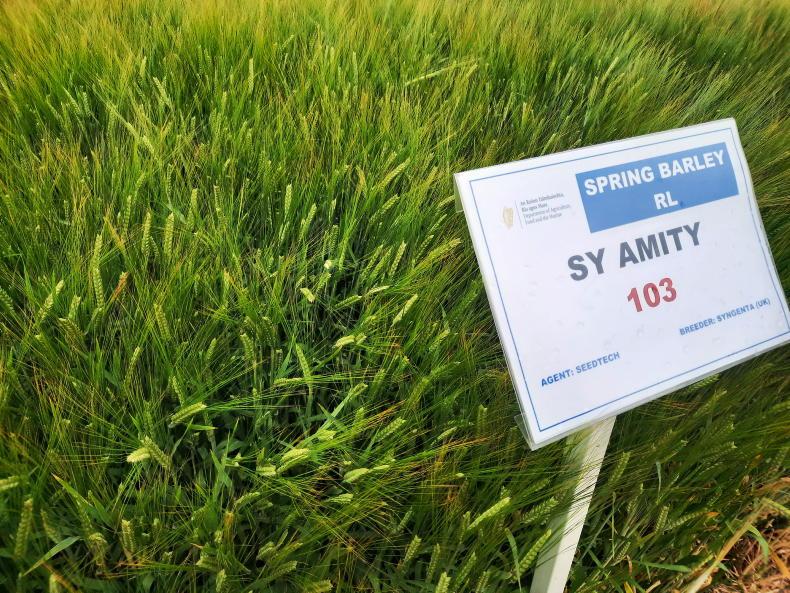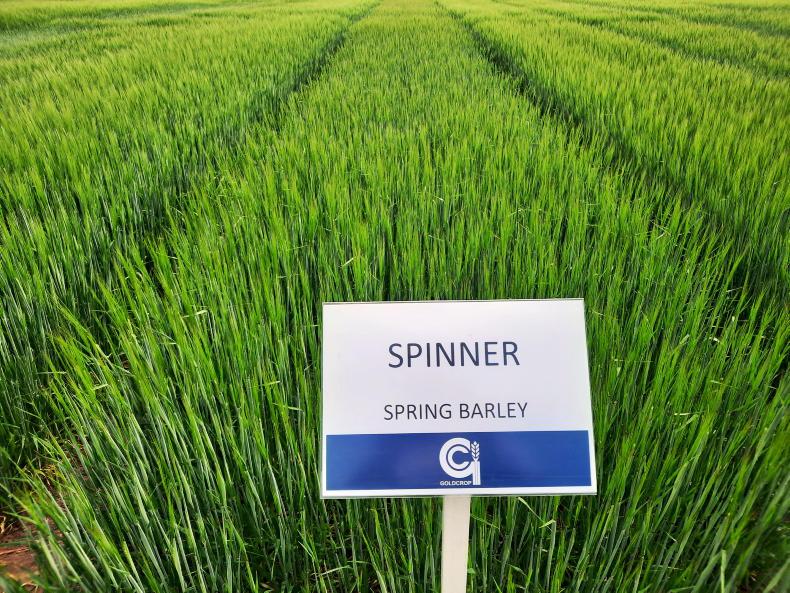The spring barley recommended list has been released by the Department of Agriculture.
There is a seed shortage this year, so getting the variety that you want may be more difficult than usual, but you should still try to get the varieties that you think will suit your system best.
Choosing the right variety is the fist step in a sustainable management system. Get your seed orders in with your merchant or co-op as soon as possible.
One variety is no longer on the list - SY Errigal. Three new varieties have been added to this year’s list and have been eagerly awaited, as they have been showing promise in trials.
Florence is a new variety and tops the entire table of 10 varieties for relative yield with a score of 106. The remaining two new additions - LG Mermaid and Spinner - both hit 105, along with fully recommended varieties Geraldine and Skyway.
Straw quality
Of course, yield is not the only thing to be looked at when choosing a variety. Straw quality, disease resistance and quality should all be examined.
Florence is the shortest variety on the list at 69.8cm. This could bode well for management. Rockway is the tallest at 77.4cm.

SY Amity spring barley.
There is not much in the difference for early ripening, with all varieties on a score of 5 or 6. A mix between the two would be good where you have a lot of barley to get through.
RGT Planet, Skyway and LG Mermaid score worst for straw breakdown, which is something to keep in mind, as delayed harvest could result in losses here if heads are falling to the ground.
Disease resistance
Looking at disease levels, it will come as no surprise to growers that Planet scores lowest on net blotch.

Spinner spring barley.
Many varieties are hitting an 8 for resistance to net blotch, while many varieties are on a 7 for rhynchosporium and all hit 8 for mildew and a 5 or 6 for brown rust.
Grain quality
SY Amity hits the top place for thousand grain weight at 55.9 and has the lowest screenings at 0.7%, while Gangway has the highest KPH or hectolitre weight at 69.8.
All varieties were between 10.1% and 10.5% for protein.
If you are growing malting barley, you probably won’t get to choose your variety, but be aware of protein contents, screenings and hectolitre weights if you can choose a variety.
The spring barley recommended list has been released by the Department of Agriculture.
There is a seed shortage this year, so getting the variety that you want may be more difficult than usual, but you should still try to get the varieties that you think will suit your system best.
Choosing the right variety is the fist step in a sustainable management system. Get your seed orders in with your merchant or co-op as soon as possible.
One variety is no longer on the list - SY Errigal. Three new varieties have been added to this year’s list and have been eagerly awaited, as they have been showing promise in trials.
Florence is a new variety and tops the entire table of 10 varieties for relative yield with a score of 106. The remaining two new additions - LG Mermaid and Spinner - both hit 105, along with fully recommended varieties Geraldine and Skyway.
Straw quality
Of course, yield is not the only thing to be looked at when choosing a variety. Straw quality, disease resistance and quality should all be examined.
Florence is the shortest variety on the list at 69.8cm. This could bode well for management. Rockway is the tallest at 77.4cm.

SY Amity spring barley.
There is not much in the difference for early ripening, with all varieties on a score of 5 or 6. A mix between the two would be good where you have a lot of barley to get through.
RGT Planet, Skyway and LG Mermaid score worst for straw breakdown, which is something to keep in mind, as delayed harvest could result in losses here if heads are falling to the ground.
Disease resistance
Looking at disease levels, it will come as no surprise to growers that Planet scores lowest on net blotch.

Spinner spring barley.
Many varieties are hitting an 8 for resistance to net blotch, while many varieties are on a 7 for rhynchosporium and all hit 8 for mildew and a 5 or 6 for brown rust.
Grain quality
SY Amity hits the top place for thousand grain weight at 55.9 and has the lowest screenings at 0.7%, while Gangway has the highest KPH or hectolitre weight at 69.8.
All varieties were between 10.1% and 10.5% for protein.
If you are growing malting barley, you probably won’t get to choose your variety, but be aware of protein contents, screenings and hectolitre weights if you can choose a variety.








 This is a subscriber-only article
This is a subscriber-only article











SHARING OPTIONS: